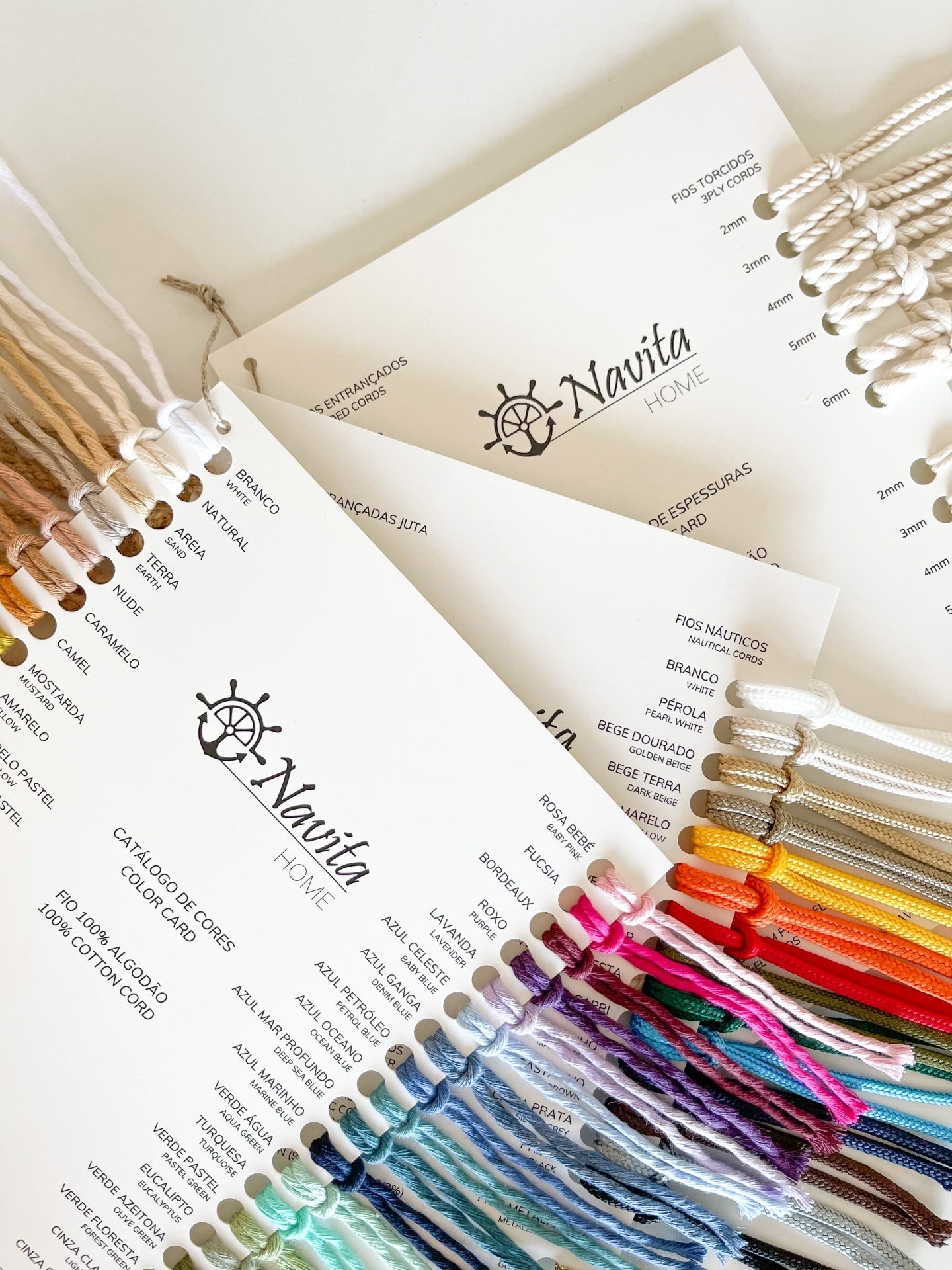
Main differences between all types of yarn
Partilhar
Braided Wires . Braided threads are consistent threads, without an inner core, making them slightly flattened cords. They are malleable, an ideal characteristic for manual work, however, it is difficult to unravel them due to the consistency of their braid. Their texture is smooth, which provides extreme comfort in handling. They are chosen for decorative panels in macramé, tapestries, plant stands, accessories and clothing, crochet, and other manual work that requires a material with their characteristics.
Parallel Braided Yarns . Parallel braided yarns are consistent yarns, without an inner core, with a rounded configuration. They are equally malleable and difficult to unravel through the ends. Their texture is slightly rough, which gives a more worked effect to the pieces. Both braided yarn configurations are chosen for the same purposes, since the only difference between them is the texture and appearance of the cord. The choice will depend on personal taste or that of your client, or the type of effect desired for your creative project.
Twisted Wires . Twisted yarns are made up of 3 strands twisted together, which can be easily shaped and combed. They are malleable, an ideal feature for manual work, and fray easily at the ends, and can then be combed, creating a leafy fringe. They are best-sellers in the world of crafts, especially among beginners, due to their versatility in all types of manual work.
Wick/String . The cotton wicks, or string as they are widely known in Brazil, These are threads that have a single, light twist, making them very soft, light and unravelable. They are the result of a light twist of several fine cotton filaments and can be combed very easily and satisfactorily, until they create a lush fringe. The main uses range from miniature pieces such as keychains or accessories and covering objects to the weaving technique, large decorative panels and macramé leaves.
Knitted Yarns . Knitted yarns are braided in a knitted pattern and obtain a rounded/tubular shape, resulting in a light and malleable yarn for work by hand or with needles. They are preferred for crochet because of their consistency, suitable for work with needles, as they do not twist and it is impossible for them to fray at the ends. They are also very popular for macramé and any type of craft work that requires lightness, comfort and malleability.
Do you have a question you would like answered on our blog? Contact us!


